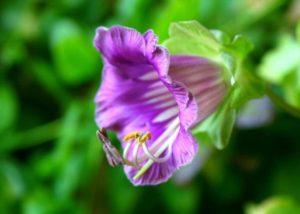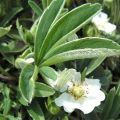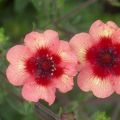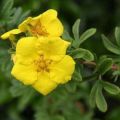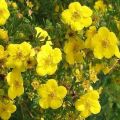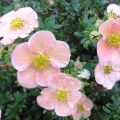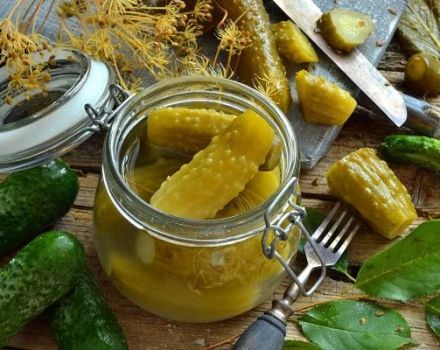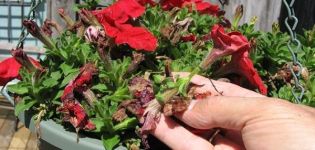Planting, growing and caring for cinquefoil, how and when to cut
Kuril tea, dazifora, five-leafed leaf - all these are the names of one shrub, in most regions known as Potentilla shrub. This is a truly unique plant that combines beautiful appearance, many health benefits and ease of cultivation. Let's take a closer look at it by examining the basic principles of breeding and care.
Planting shrub Potentilla seeds in open ground
Shrub Potentilla is a perennial crop that is conveniently grown with seeds planted in open ground. With a similar breeding method, novice gardeners should pay attention to the following points:
- convenient time for sowing;
- performing preparatory activities to help prepare the soil for planting.
If they are observed, the process of adaptation and growth of Potentilla will take place without excesses, and beautiful bushes will appear on the site, harmoniously fitting into almost any landscape.
When to sow seeds
Planting Potentilla seeds in open ground is typical for herbal varieties, however, shrub varieties also lend themselves to this growing method, and problems should not arise. Planting time depends on the choice of soil:
- in the fall, seeds are sown in open ground;
- in the spring - for seedlings.
Each method has its own nuances, which should be considered separately.

Planting shrub Potentilla in spring
The herbaceous culture is planted in the spring, for seedlings, starting in March. For this, the seeds are grown in specially prepared, fertile soil, which is covered with polyethylene. When choosing this method of breeding, do not forget to irrigate the seeds regularly and maintain the ambient temperature around 15-20 about.
As soon as the seeds have sprouted and a couple of young leaves have appeared on the stalks, they are packaged in separate pots and grown in them until the end of summer.
In autumn, they are planted in open ground. Closer to winter, the seedlings are covered with a special anti-freeze material. The first year after planting, the cinquefoil will not bloom, and you will have to be patient until the next season.

Note! Spunbond can be used as a covering material.
The nuances of planting Potentilla in the fall
Planting seeds in the fall is carried out without stratification, which saves the time and effort of the gardener. Seeds planted in this way will give powerful shoots in the spring, after which it remains to plant them separately from each other, enjoying the beauty and comfort of the site.
Seedlings obtained in this way require minimal maintenance and have strong immunity.
Preparatory work on the ground
An important set of measures, the implementation of which will ensure the stable growth and flowering of the bush. Preparatory work consists of:
- choosing a place for landing;
- soil preparation;
- digging a planting hole;
- the choice of the distance between seedlings;
- sowing.

Choosing a landing site
You need to plant Potentilla in a specially prepared place that best meets all the requirements. Any shrub-type plants prefer sunny places with light, fertile soil. Be aware that in hot climates, prolonged exposure to sunlight will cause petals to burn out. This applies to varieties whose buds are red.
The shade for this plant is not critical, but in this case, its decorative characteristics fall noticeably. In addition, various varieties of Potentilla have their own preferences regarding the level of illumination, which must also be taken into account.
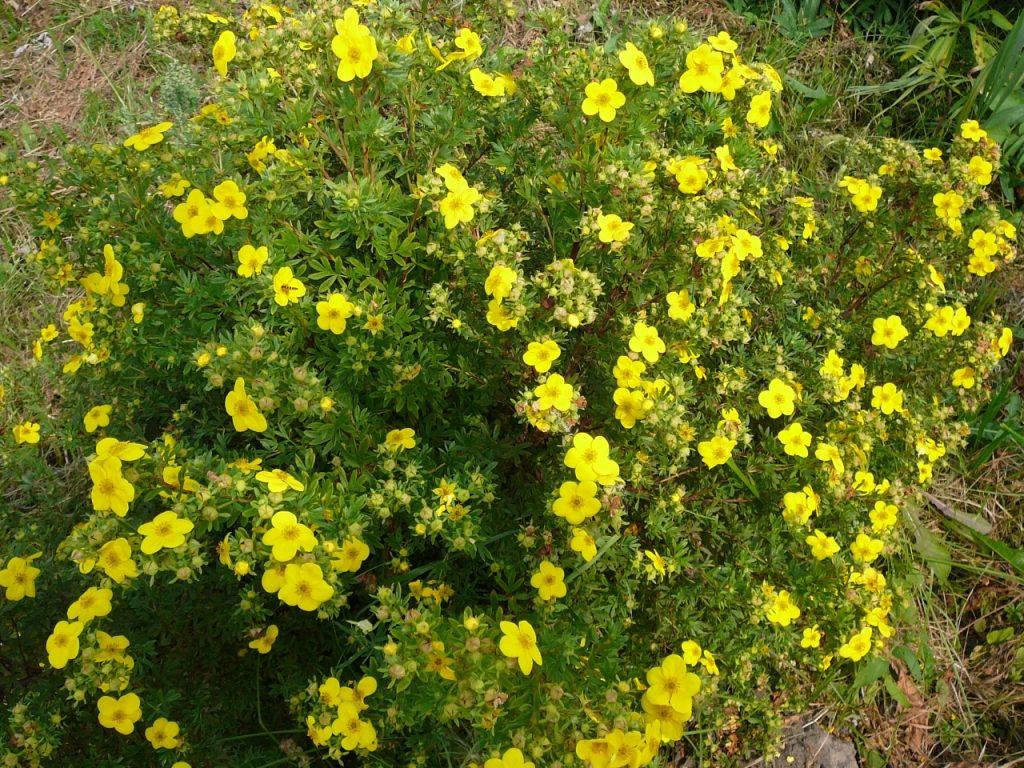
Preparing the soil for planting
Bushes prefer to grow in soil that meets the following requirements:
- loose soil;
- with weak acidity;
- has good drainage properties;
- a small amount of lime should be present in the soil.
These requirements are not difficult to fulfill, and problems should not arise.

Landing pit characteristics
A planting pit dug for seedlings has the following characteristics:
- The width of the hole is 2 times the width of the earthen coma that covers the roots of the bush.
- The depth is also 2 times the size of the earth clod.
- The bottom of the pit is covered with gravel or other material with similar properties to increase drainage properties.
- Half of the volume of the planting pit is filled with sand, humus and earth obtained after rotted leaves, in the following proportions: one share of sand, 2 shares of humus, 2 shares of earth.
- The seedling is placed in a hole, after the void is filled with the same earthen mixture.
- The root collar should protrude slightly above the ground level.

Sowing seeds
Seeds are planted in special beds that are not difficult to form. This method is not recommended for novice gardeners, and for the first time it is advisable to grow seeds for seedlings indoors, and then place them in open ground. The composition of the soil on the bed should correspond to the composition of the soil in the planting pit.
Group landing distance
It is important to maintain the correct distance between the cinquefoil seeds so that each bush receives the right amount of nutrients and sunlight, without interfering with the development of others. Experienced gardeners advise not to sow the seeds or seedlings of this plant closer than 40 centimeters from each other. Adhere to the indicated scheme, and there will be no problems with the development of the bush.

Potentilla care
Cinquefoil is an unpretentious plant, but it also requires minimal maintenance for harmonious growth. Proper care includes:
- timely watering;
- loosening the soil around the bush;
- mulching;
- top dressing;
- haircut and trimming.
Each point is important to comply with and has its own nuances, which we will discuss below.
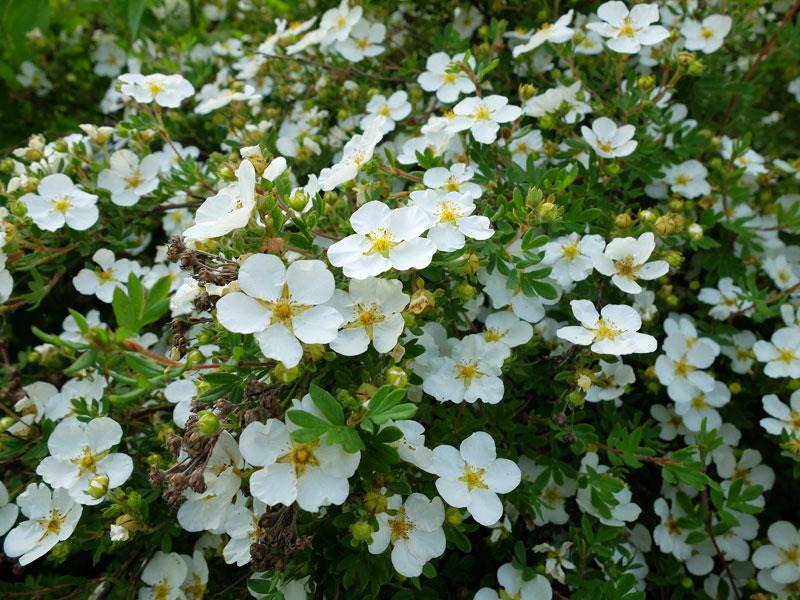
Watering
Young bushes of yellow cinquefoil, in contrast to mature, mature plants, are more demanding to care, which is expressed in the need for abundant watering. Stick to the following volumes:
- in dry months, the bush is irrigated at least once every two weeks;
- in rainy periods, it is not necessary to water the plant, the water that has got into the soil with precipitation is enough for it;
- if the drought continues for extra time, gardeners advise occasionally evening spraying.
Note! Adult specimens consume about one bucket of water per month during dry periods. Young specimens consume double the amount of liquid.
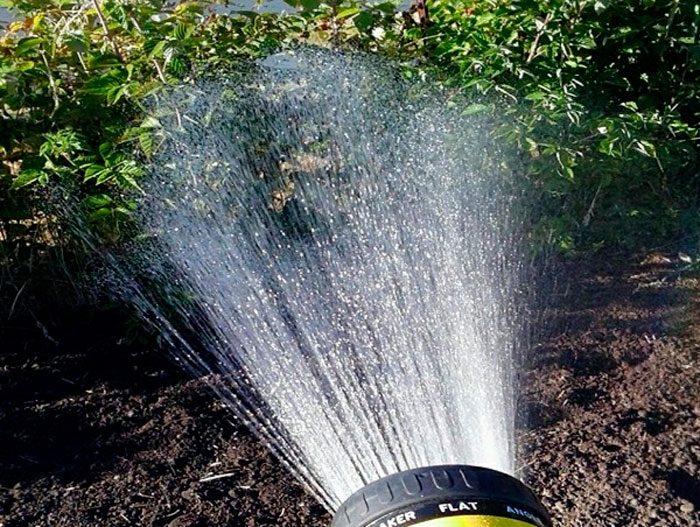
Loosening
Loosening the soil is a must. It helps water and nutrients penetrate the soil better. It is not required to loosen the soil deeply. In the process of loosening, remove weeds and other foreign plants that interfere with the growth of the crop, taking away moisture from it. Proper care will allow plants to develop calmly and evenly.
Mulching
Mulching is necessary to protect the top fertile soil layer and saturate it with useful elements. As mulch are:
- hay;
- leaves;
- sawdust;
- peat;
- geotextile.
Mulching allows you to:
- to reduce the formation of weeds at the place of growing crops;
- protect from weathering and freezing.
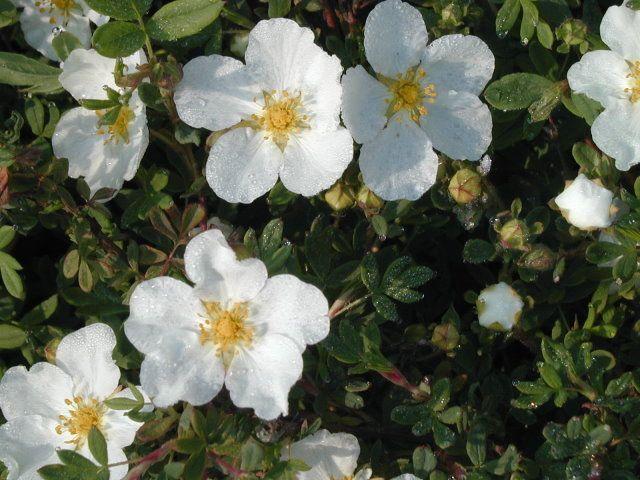
During the growing season, the mulch layer is periodically renewed.
Top dressing
Top dressing is carried out three times during the growing season. As top dressing use:
- mineral fertilizers - in the process of bud formation;
- during flowering, fertilizers with a high phosphorus content are used as top dressing;
- the last feeding is carried out in early autumn, and it includes potash and phosphorus fertilizers.
Such a fertilization system allows you to receive the necessary set of useful trace elements throughout the season, smoothly preparing the bush for wintering.
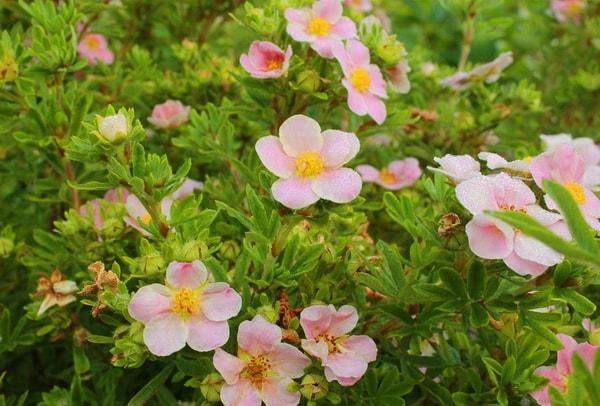
Haircut and trim
Pruning bushes allows you to stimulate their growth, giving the plantings a pleasant, aesthetic appearance. Pruning is done:
- In the first months of spring. It is general. The branches are cut to a third of the total length, and the bush takes the shape of a ball.
- Pruning in the fall is done in order to strengthen the immune system. Old shoots damaged or dying off after the summer are removed and burned.
- A cardinal haircut is made once every 5 years. After its completion, the height of the bushes should not exceed 20 centimeters. Don't worry - the branches will grow back quickly and the plantings will return to their original shape.
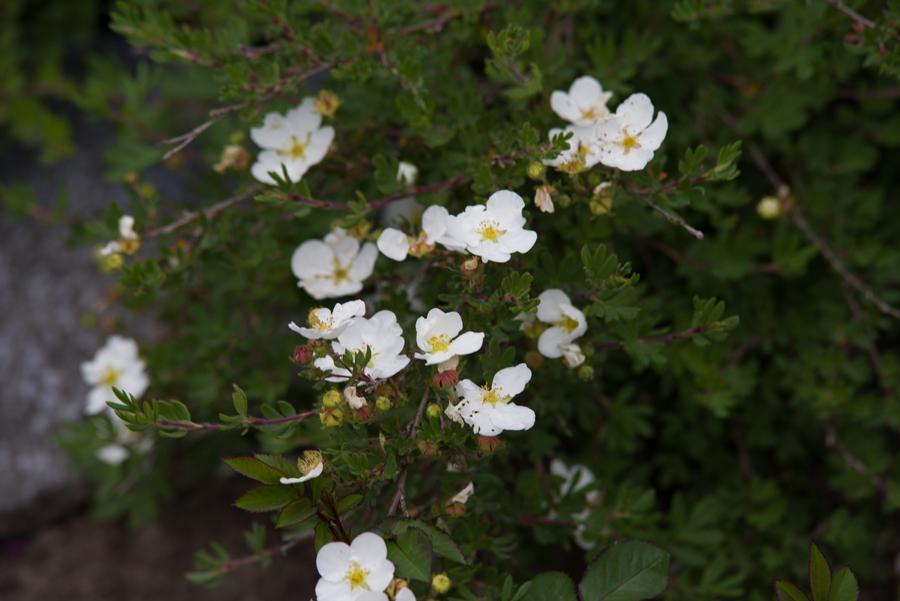
Reproduction methods of Potentilla
Cinquefoil reproduces by:
- seeds;
- layering;
- dividing the bush;
- cuttings.
The choice of method depends on the preferences and capabilities of each gardener.
Seeds
It is not difficult to propagate cinquefoil with seeds, and this method is suitable for both beginner gardeners and experienced professionals. The method is considered the longest, but, with due observance of all stages, it is in no way inferior in efficiency to the rest of the options.
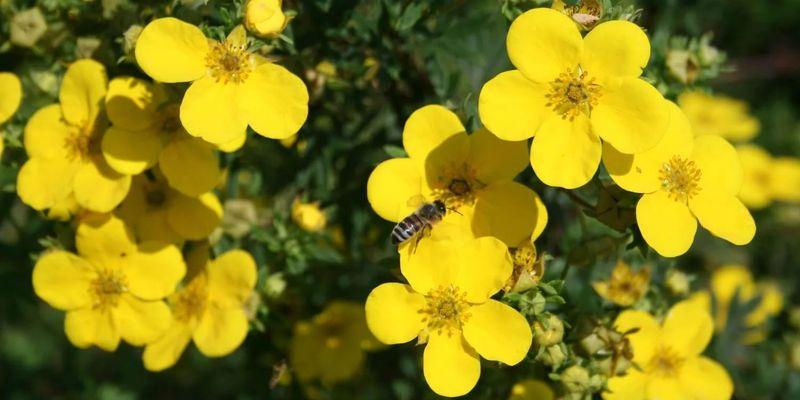
Layers
It is used in the summer when young, flexible shoots are formed on the bush. The process of reproduction by layering is as follows:
- the lower part of the shoots, in places of contact with the ground, is trimmed;
- the shoots prepared in this way are sprinkled with a layer of fertile soil and fixed with a stone or a metal bracket;
- after a year, the cuttings are separated from the main bush and planted as an independent plant.
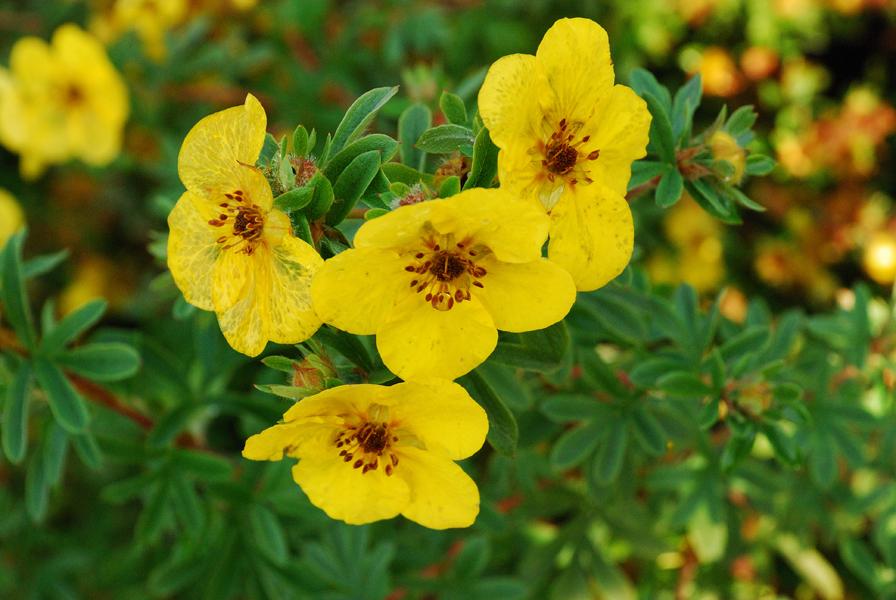
By dividing the bush
Reproduction by dividing the bush is carried out either in the fall or in the spring. In autumn, it is allowed to propagate Potentilla in a similar way exclusively in regions with a warm climate. To divide the bush you need:
- dig in a bush on one side;
- remove part of the roots with shoots, carefully separating them with a hatchet or shovel;
- the main bush is covered with earth, and the extracted shoots are pruned to a height of 30 centimeters, after which they are transplanted to a previously prepared place.
Many varieties of Potentilla, including pink, lend themselves well to this method.
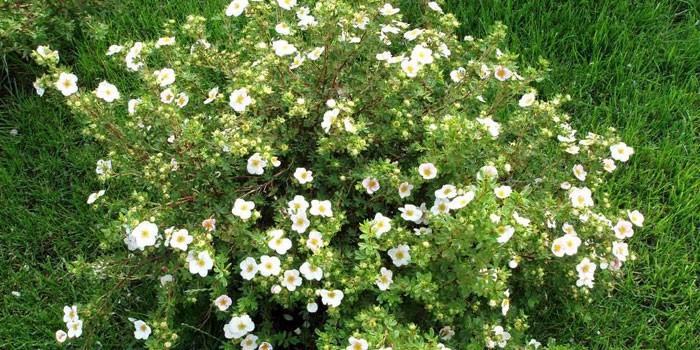
Cuttings
As cuttings for breeding, any shoots are suitable - both young and mature, which have time to stiffen. Cuttings are separated from a healthy, disease-free bush. Cuttings are carried out together with the leaves, since it is in them that all vital processes for this method take place.
Note! Cuttings are not cut from flowering bushes. Such specimens will be painful and difficult to grow.
When is it necessary to transplant Potentilla
Two periods are suitable for transplanting Potentilla:
- fall;
- Spring.
It is better to transplant those bushes that have reached the age of at least three years. The preparation of the transplant site is carried out in a manner similar to the preparation for planting a young bush.
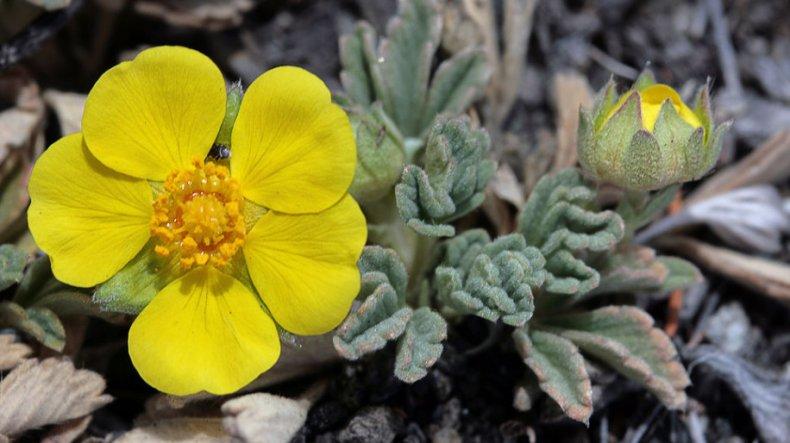
Autumn transplant
Autumn transplantation is carried out in the last days of August, early September. This time is most optimal, and the plant will have time to take root in a new place before the onset of cold weather. It is not recommended to make an autumn transplant in regions with poor climatic conditions.
Transplant in spring
In the spring, it is allowed to transplant Potentilla in any regions of growth. The best time is considered the period when the snow has completely melted and the soil thawed after the winter frosts. The transplant is carried out in the usual way and does not have any peculiarities or nuances.
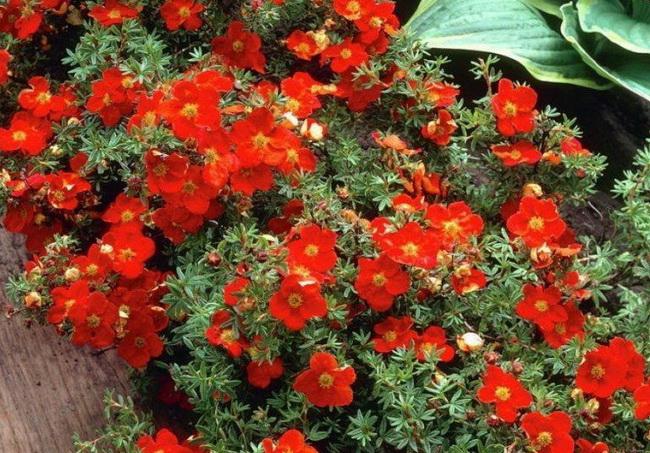
How to prepare Potentilla for winter?
Despite the fact that Potentilla bushes are considered frost-resistant, there are a number of regions in which winter is too harsh even for such a plant. In addition, not all varieties have the same high resistance to negative temperatures, and need additional protection.
Young shoots growing on the site for the first year also have a weakened immunity to cold. Preparation for wintering begins in the fall.
Potentilla care after flowering
Depending on the type of Potentilla, the gardener needs to do the following:
- annual varieties are completely removed from the site, the soil at the planting site is dug up and fertilized;
- shrubs are cut to a third of the length of the shoots;
- as a prophylaxis against the occurrence of diseases and pests, plants are treated with a solution of Bordeaux liquid.
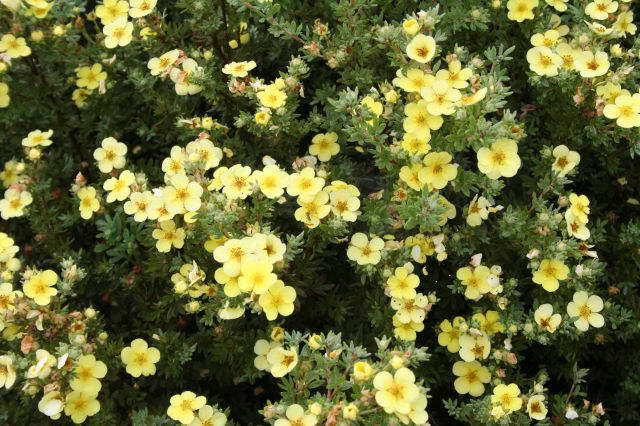
Pruning for the winter
In addition to the obligatory pruning, before the winter season, all damaged and dried shoots are removed from the bush, which weaken the plant. This will allow the cinquefoil to retain more strength for the winter, without spending them on vain attempts to restore the damaged areas.
Shelter and insulation
If the varieties of Potentilla grown on the site do not have the proper frost resistance, they must be covered with special materials. The ground around the bush is mulched with a layer of humus or peat. Spruce branches covered with burlap on top are suitable as a material for shelter. The fabric is fixed with stones or bricks for reliability. During the thaw, remember to remove the insulation layer so that the plant can access oxygen.
Diseases and pests of Potentilla
The only disease that the immune system of Potentilla white cannot cope with is rust. It manifests itself as a brownish-yellow bloom on the leaves of the bush. If the disease is not localized in time, the leaves will dry out. Most often, the source of this infection is conifers growing nearby. Try not to plant cinquefoil nearby, and you can not worry about its safety.
